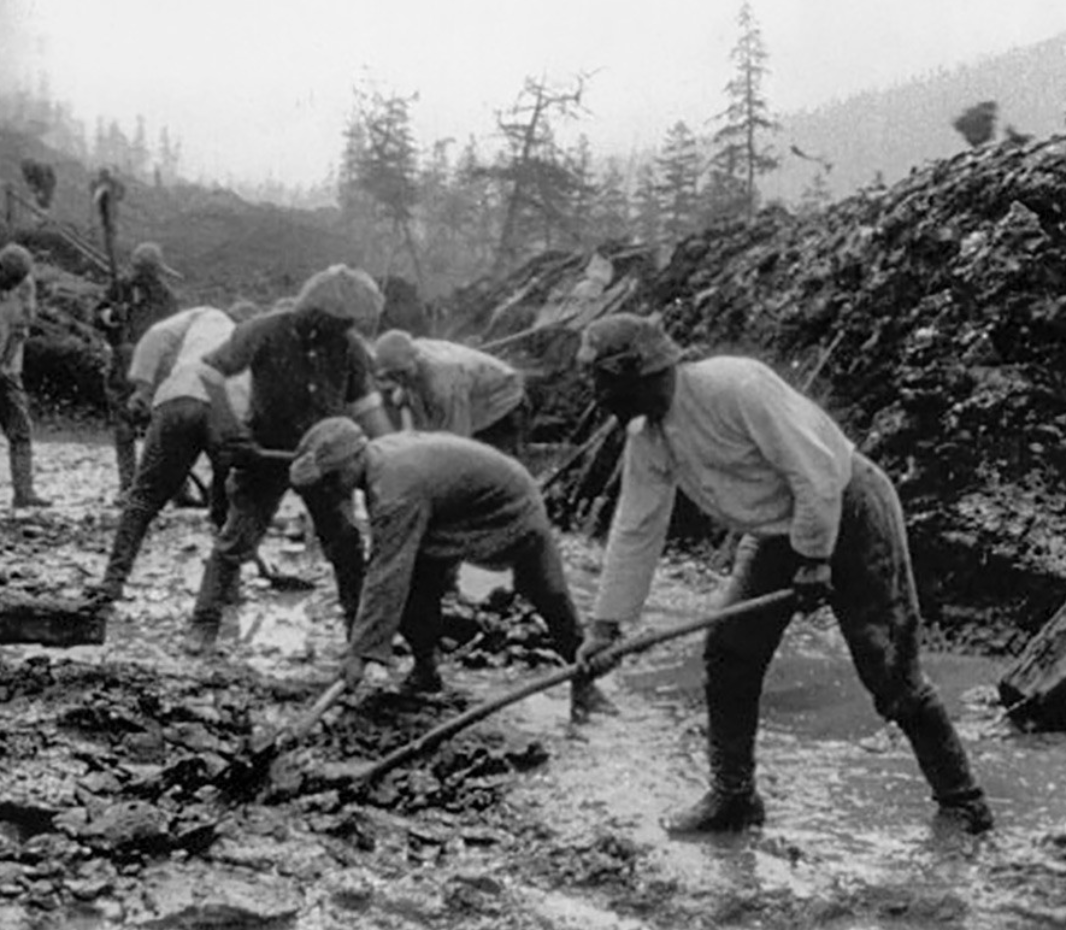
Prisoners building a road in Kolyma (Courtesy of Russia Beyond).
THE SOVIET UNION AND SOCIALIST REALISM
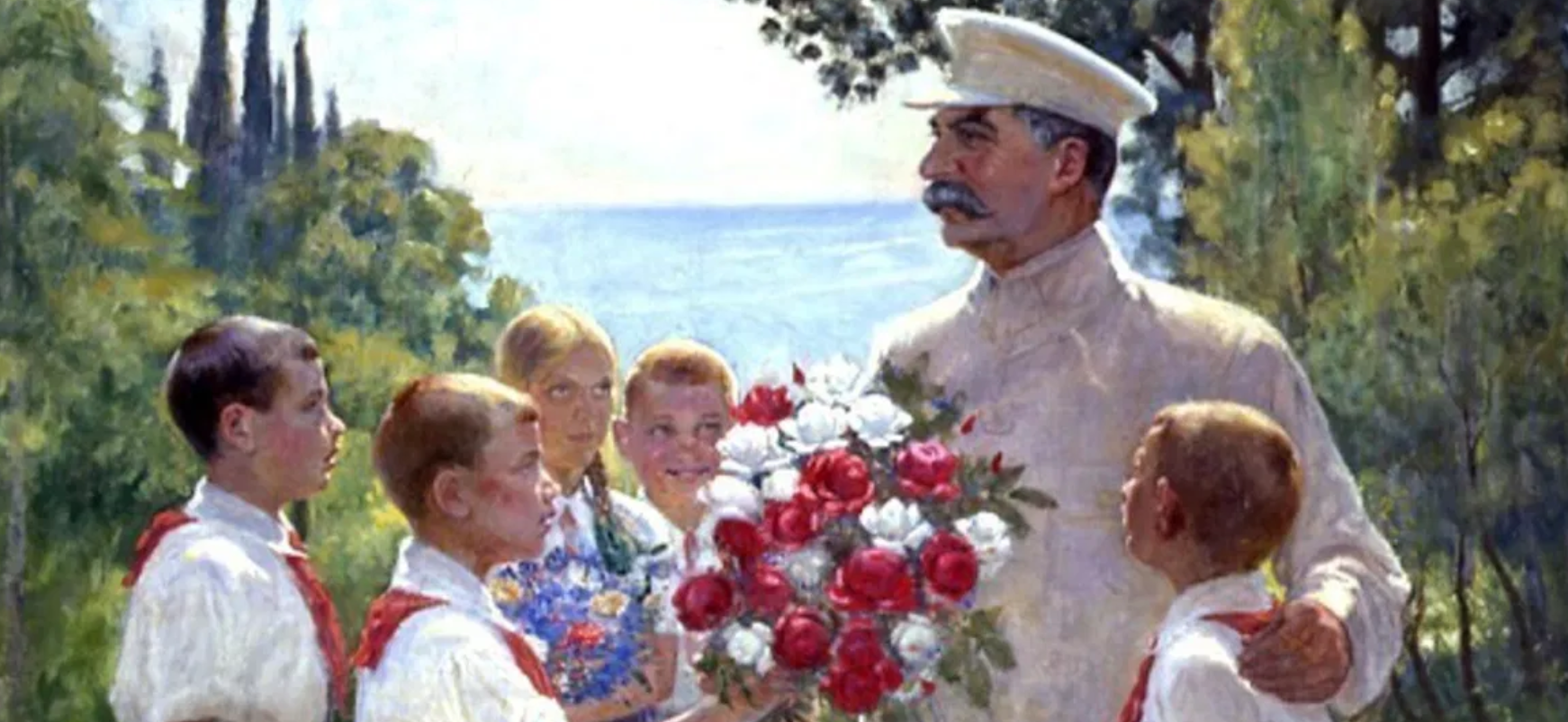
Roses for Stalin by Boris Vladimirski (Courtesy of The Charnel-House).
In 1928, the Soviet dictator Joseph Stalin began to employ his series of Five-Year Plans, focused on agriculture, industrialization, armament production, and military advancements. These Five-Year Plans intended to protect the country against attacks from industrialized western countries as well as to transform the Soviet Union’s economy.
In October 1932, Stalin and other Soviet leaders met to discuss how Soviet art should reflect the country's transformation.
This new style of Soviet art was called “Socialist Realism.”
“If the artist is going to depict our life correctly, he cannot fail to oberve and point out what is leading it towards socialism. So this will be socialist art. It will be Socialist Realism."
~ Joseph Stalin
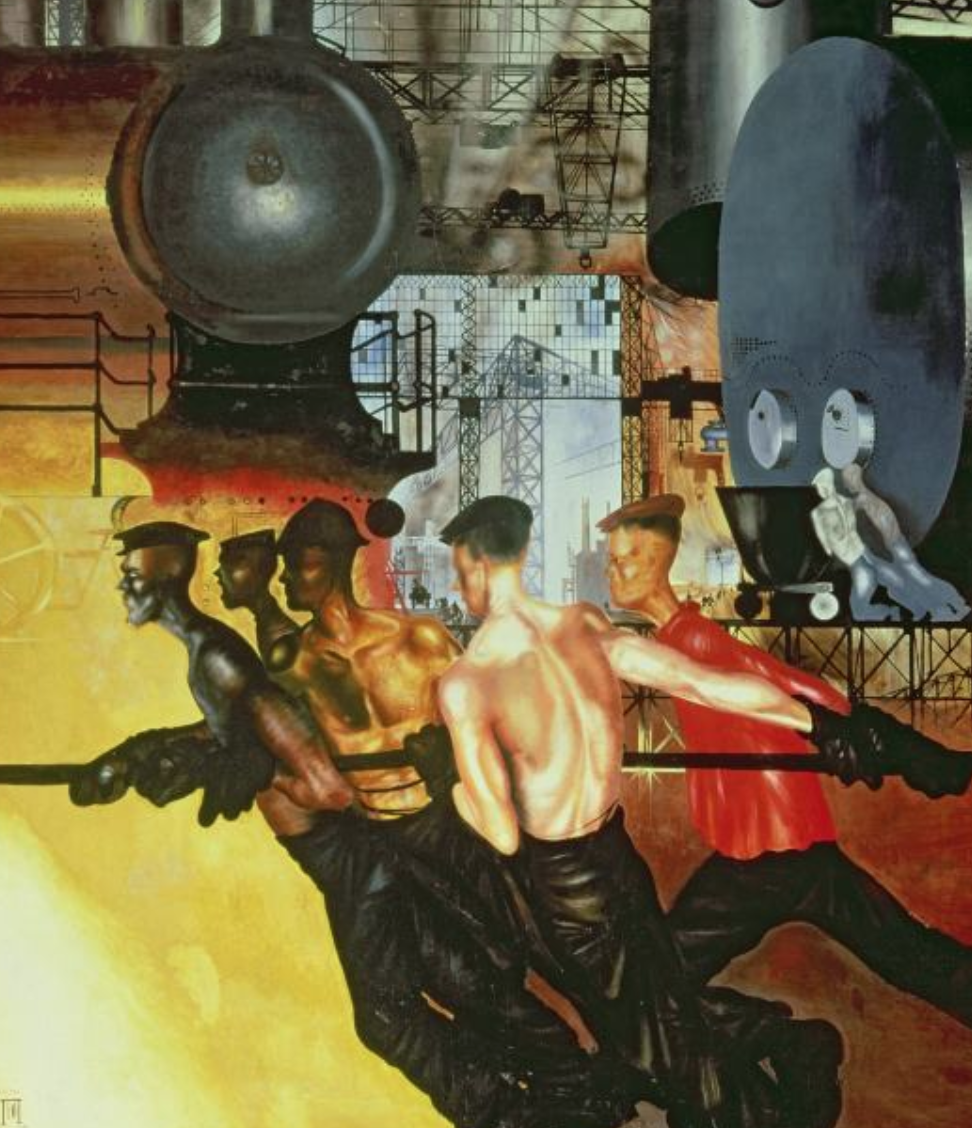
Increase the Productivity of Labor by Yuri Pimenov (Courtesy of The Art Story).
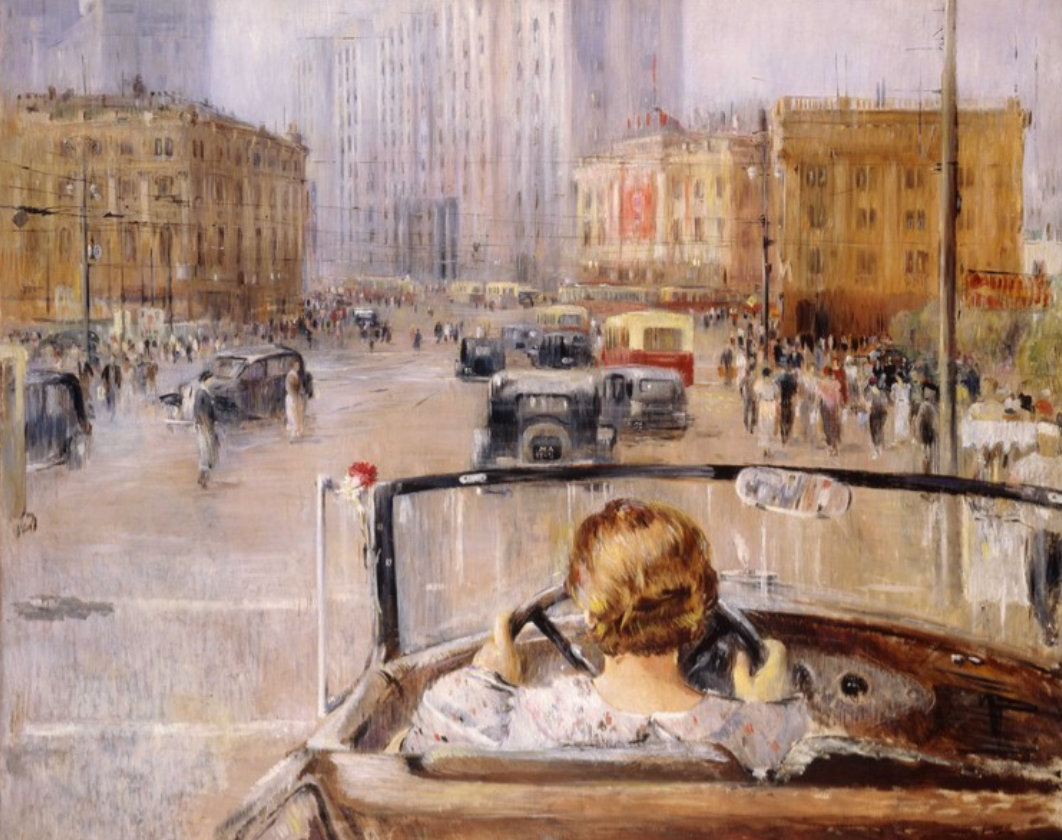
New Moscow by Yuri Pimenov
(Courtesy of The Art Story).
Art was now meant to be simple and conservative; it’s objective was to reflect the life of the working class, referred to as the "proletariat," and promote communist ideology.
“How to reflect that [Socialist Realism] in abstract music is... employing Russian elements, folk music… Music was meant to be relatively simple… to end in a happy, enlightened state of triumph that would lead everyone to believe that things were getting better…"
~ Michael Parloff, founder and artistic Director of Parlance Chamber Concerts in Ridgewwood, NJ
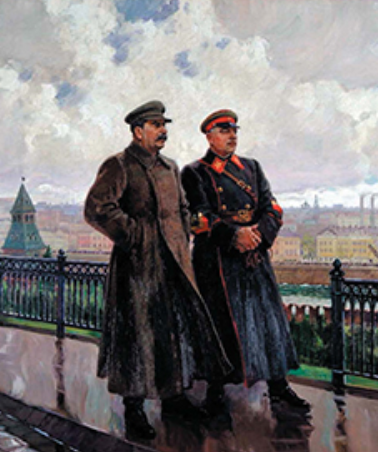
Stalin and Voroshilov in the Kremlin
(Courtesy of The Art Story).
The reality of the Soviet Union was nothing like this art portrayed. Under the nationalistic regime, freedom was limited while the authority of Soviet leaders was limitless. Innocent people were often sent to forced labor camps called "gulags."

Prisoners building a road in Kolyma (Courtesy of Russia Beyond).
“It is difficult for a human being even to imagine such terror, tyranny, violence, and lawlessness… People die like flies, i.e., they die a slow and painful death...yes, indeed there are some guilty people, but the majority suffer innocently…"
~ G. Zheleznov, Vinogradov, F. Belinskii, Letter to Bolshevik
Many artists were “framed for nonexistent crimes and destroyed with no protest from any quarter” (Simon Karlinsky). Even Shostakovich’s close friend, stage director Vsevolod Meyerhold, was tortured and killed in 1940.
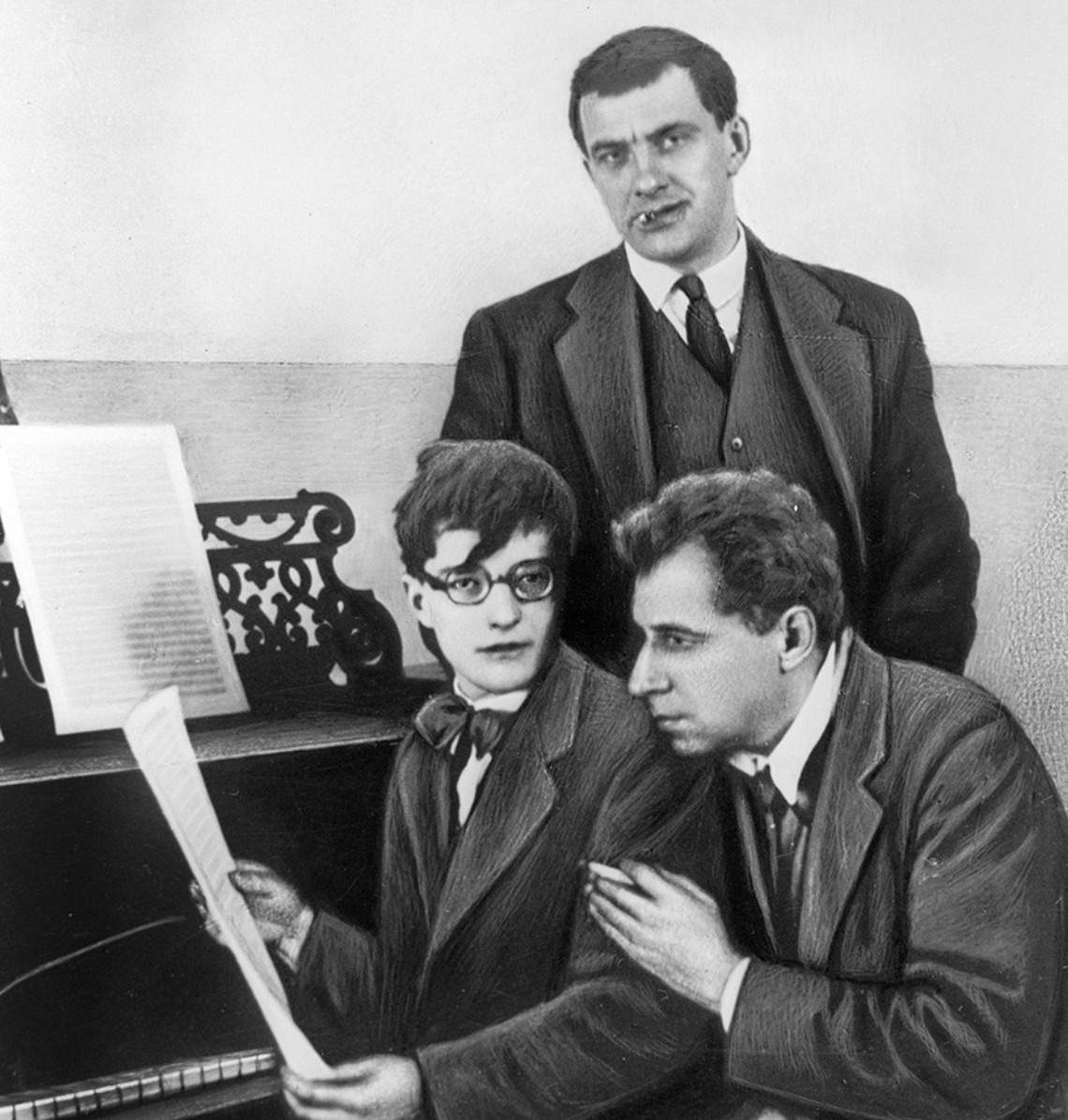
Shostakovich, Mayakovsky, and Meyerhold, 1929
(Courtesy of Russia Beyond).